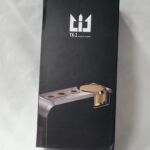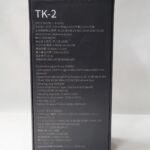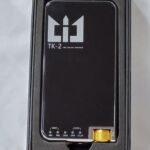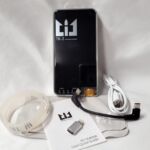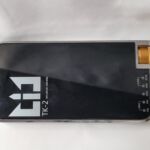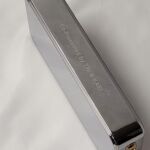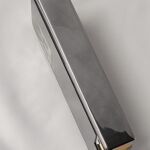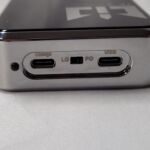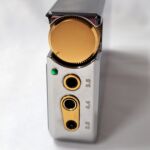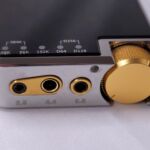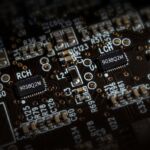Tri Audio TK2
disclaimer: The Tri TK2 was sent to me by KeepHifi and Chifi Audio Reviews on Facebook for purposes of review. I have previously reviewed the Tri I3, I4, and Meteor earphones but this is the first DAC/AMP I have reviewed by the brand. I will be sending the TK2 on to the next reviewer upon completion and have received no financial incentives for this review, nor do I have a financial interest in Tri Audio, KeepHifi, or Chifi Audio Reviews. For more information about the Meteor or to purchase one, please visit KeepHifi.
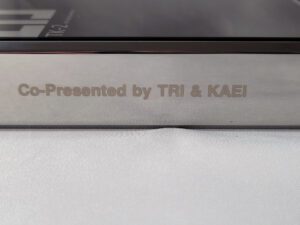
One thing to note is that one the side of the device it clearly states co-presented by KAEI and Tri. I suspect this is a Tri branded HP-100 variant as the HP-100 has been a mainstay of the KAEI line and have very similar specs with a different op-amp in the output stage. This may be a second generation of the HP-100 or a brother but is certainly fairly closely related. I don’t think the KAEI brand has been advertised much outside of the far east and this may have been a co-branding decision to introduce KAEI amplifiers and DAC/Amps to a wider market under the Tri banner. I’m not aware of the business relationship between KAEI and Tri so cannot comment.
Unboxing / Accessories:
The TK2 comes shipped in a black lift top box with the Tri logo at top and a photo of the nose of the TK2 at bottom front. The rear face shows the full specifications in both Chinese and English. Lifting the cover reveals the unit in foam surround with the rest of the kit stored in a small box underneath the main. The unit does come with scratch guards with tabs for easy removal. The kit is fairly sparse with a USB type-C to USB type-C short interconnect, a type-C to lightning adapter, rubber band for attaching to phone, a cleaning cloth, charging cable (type A to Type C), and the quick start guide.
Build:
There is no doubt this is a high-end looking DAC/amp with its polished metal and black glass finishes but it is also a complete fingerprint magnet. There is no surface that can be touched without leaving prints and the back is so highly reflective that it picks up the scale pattern of the lights in one picture. The TK2 is available in either polished chrome or black chrome frame with a black glass face and brass accents. The frame is a solid billet of aluminum machined to shape and then polished to near perfection before the internals are loaded. One word of caution is that the device is fairly easily scratched and by the time it arrived at my door for the tour it was pretty scuffed up. I used some Flitz metal polish to bring out most of the little surface scratches but one near the volume know is still visible. I would recommend a case for users who intend to carry the TK2 to prevent scarring it. I have no worries about its survival as heft is quite good, but cosmetically a case is in order. All the controls are on the ends with both sides slick. Near the top face, we have a series of LEDs that run across the glass face that indicate the type and sampling rate of the source file. On the top face itself from left to right are 2.5, 4.4, and 3.5mm ports, a single LED indicator power indicator, and the large volume knob. At the bottom of the device, two USB type-C ports for charging and connectivity are separated by a line out/ pre-amp out switch that controls whether output is fixed or volume controlled. There is also an LED on the bottom face to indicate charging status.
Internals:
The TK2 does not list what USB chipset is used but with a little snooping I found it to be the latest Savitech S-core chip. I’m guessing the 9137 but it could be the 9127 as well based on the details I was able to surface. For more on the Savitech products see their website. The Savitech is a competitor to the Xu208 chipset and offers 32/384 PCM and 256DSD capability and is available in several different packages for various markets. The USB input then passes the data via I2S to a pair of ESS 9038Q2M chips that handle DAC and filtering functions. The Q2M version of the 9038 is the 2-channel mobile chip not to be confused with the larger desktop series 8 channel chip. By using a pair of chips, the Tk2 can sum the data of both channels in a single chip as a single output which helps to lower noise and artifact. There are two internal clocks used to help eliminate jitter as well. Combined, these technologies help lower the overall THD+N which Tri lists as <0.005%. The DAC chips then feed an output stage that consists of a pair of Texas Instruments OPA2132 and then a pair of TPA6120A2 current feedback high power amplifiers. This creates a high powered amplifier capable of delivering 1.25W into a 32Ω load. At low outputs, the amplifier will operate in class A and as power increases it shifts to class AB while retaining a low noise floor and low distortion. Volume control is handled by potentiometer and has the gain controls built in. (more on this in a moment). The user also has the option of setting line-out mode (on the base) and then output is a fixed 2 volt output. The battery is a 5000mAh lithium ion cell with both QC3.0 and PD charging supported. Tri lists 9 hour battery life which I found to be reasonably close to what I got in actual use at normal listening volume. I was able to get closer to 10 hours at low levels and closer to 8 if pushing the volume louder. One nice feature is the separation of input USB and charging USB ports keeps the TK2 from draining your phone or tablet when connected.
Controls/gain:
The controls on the TK2 appear super simple with the volume knob serving as both on-off switch and volume control and the Line Out/Pre-Amp Out switch on the base being the only two options. The volume control also hides another feature though, the gain control. With the volume below the 50% mark the unit operates in low gain mode. Crossing the 60% position on the dial automatically switches the unit to high gain mode to allow use with more demanding headphones. This gives the Tk2 the ability to work with fairly sensitive IEMs at the low end and really demanding headphones at the top end. I found the Campfire Andromeda which is notorious for hissing with high powered sources to be reasonably quiet with the Tk2 in low gain mode. In High gain mode I had no trouble powering the Beyerdynamic 990 (600Ω), the Hifiman He560, and the Sennheiser HD800. It did stumble a bit with the Hifiman He6 but that is hardly a shock.
Sound:
Sound on DAC-amps is always a challenge as in a perfect world, they don’t have one and any deviation from that is often quite small and hard to spot unless you know every other piece of the chain exceedingly well. I listened to the TK2 for over 40 hours using an earphone and headphone I know exceedingly well. At the end of the listening session I came away impressed with the TK2. Its low end has good power but does not elevate the sub-bass and detail and layering is good. Mid range has good energy but again is not elevated and detail levels are better than what we saw at the extreme low end. Treble is well detailed and again any deviation from neutral is very slight at best. There is not as much micro-detail as some implementations of the 9038Q2m I have heard, but at the same time it has good musicality and a nice tonality without a lot of ragged edges. I would bet on the DAC being configured to use the slow roll-off filter as that most closely matches the tonality I’ve heard from other similar implementations.
Comparisons:
I have attempted to compare other similar devices in the market but prices vary widely so I have listed rough retails for each. For comparison purposes I used a list price of $289 USD for the TK2.
Xduoo XD-05 Balanced – $429
The XD-05 series has been quite popular with the first three models in the series all sharing pretty much exactly the same shell, then came the balanced. Still a metal shell in the gray with red highlights color scheme, but with a modified shape with the volume control moved to the right side of the unit. The front face has a 6.35mm and 4.4mm port so both offer both single ended and balanced. Internally both use the 9038Q2M chip and both can use the same OPA2132 op-amps as the XD-05 supports swapping in OP-amps of the users choosing. The XD05B is more potent in single ended performance but falls behind the TK2 in balanced output by 250mW. Those who need lots of input options will want to pay the extra cost as the XD-05B offers coax, AES, optical, and analog inputs, Bluetooth (including LDAC and AptX HD) as well as USB type-C compared to only USB type-C for the TK2. One other advantage of the XD05B is the exposed filters on the DAC do give some tuning options. The TK2 is more polished, more powerful, and more purpose built so if its use case fits your need it will save you some change.
Monolith 24460 – $299
The Monolith Headphone amplifier with DAC (24460) sports an all metal build with a leatherette back cover and a display screen on the front. Inputs include a 3.5mm analog/Optical hybrid and a micro-USB port for signal and a second for charging. So while its connectors are a bit outdated, it does have more options for input vs the TK2 that only offers USB. Internally it uses an AK4493 paired with a THX 78 amplifier circuit that yields a nice clean signal and is more about cleanliness than absolute power. Output is 340mW at 32Ω so it is well behind the TK2 in that regard. One Place the Monolith does outdo the TK2 is in EQ and filters where the UI is quite easily learned and the DAC’s filters are exposed as well as a boost/cut EQ that allows some tuning options the TK2 omits. The biggest advantages of the TK2 are raw power, balanced output, and a super easy interface.
Earmen TR-amp – $249
This is my go-to recommendation for pocket dac/amps. It is roughly the same size as the TK2 (although shorter and taller respectively), has an all metal shell with mine anodized bright red. The TK2 is more polished while the TR has the screws on the face and rear exposed. Both are extremely simple devices with dual USB type-C ports for charging and connectivity, a line out / pre-amp switch, and a simple volume knob. Neither has EQ, switchable gain, or filters exposed. The TR-amp has 6.35mm and 3.5mm ports for single ended use and a set of RCA pre-outs on the rear. The TK2 omits theRCA ports and uses the standard outputs for line out as well as headphone outs. Battery life is similar and tonally both are similar as well. Those looking for a balanced version of the TR-amp will like the TK2.
Conclusion:
The Tri TK2 is very much an updated KAEI HP-100 so those with an HP-100 will be well familiar with it. The TK2 is improved in the looks department for sure but internally is very much an HP-100. The plus side of the TK2 is great power, good clarity, and a super easy UI. It doesn’t need drivers for Windows 10 or 11 and works well with Android. I even got it working with iPhone using an adapter from DDHifi. I had no trouble powering everything from the easy to drive Andromeda to the stubborn Hifiman He560. Sound wise its a good middle ground between absolute detail and musicality with just a hint of warmth to the signature. Its a purpose built unit that only supports USB input and doesnt expose the DACs filters, offer tuning options, or Bluetooth. Even with its limitations the next closest device to it in my comparison was $429 vs $289 for the TK2 so if your use case is USB only there is a significant savings to be had by going with the TK2.
Xduoo XD-05 Plus
-
Packaging - 6.5/106.5/10
-
Accessories - 6.5/106.5/10
-
Build Quality - 8.5/108.5/10
-
Sound Quality - 7.5/107.5/10
-
Battery Life - 8/108/10
-
Connectivity - 5/105/10
Summary
Pros: great build quality, great sound for the price, good battery life
Cons: its a big bulky device, no inputs other than USB. No tuning options, fingerprint magnet.


